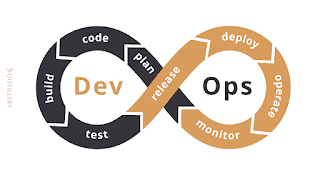Network Security
Network security
In today's interconnected world, where information flows freely across networks, ensuring the security of these networks is of paramount importance. Network security encompasses a range of practices, technologies, and protocols designed to protect the integrity, confidentiality, and availability of data transmitted over computer networks. It aims to prevent unauthorized access, data breaches, and network disruptions that can lead to significant financial and reputational damage for individuals and organizations.
Here are some key aspects and benefits of network security:
1. Data Protection: Network security measures are put in place to safeguard sensitive and confidential data from unauthorized access. Encryption techniques, secure protocols, and access controls ensure that data transmitted over networks remains confidential and protected from interception or tampering.
2. Threat Prevention: Network security solutions include firewalls, intrusion detection systems (IDS), and intrusion prevention systems (IPS) that monitor network traffic and detect potential threats and attacks. By implementing these measures, organizations can proactively identify and mitigate security risks, preventing unauthorized access and data breaches.
3. Malware Defense: Network security involves deploying antivirus software, anti-malware tools, and email filtering systems to protect against malware, such as viruses, worms, and ransomware. These solutions scan network traffic and incoming data to identify and remove malicious software, reducing the risk of infection and data loss.
4. Network Access Control: Network security ensures that only authorized users and devices can access the network resources. Techniques such as user authentication, strong passwords, two-factor authentication, and network segmentation are employed to control access and prevent unauthorized users from compromising network security.
5. Secure Remote Access: With the increasing trend of remote work and mobile connectivity, network security plays a crucial role in providing secure remote access to network resources. Virtual Private Networks (VPNs) and secure remote desktop protocols enable users to connect to the network securely from remote locations, protecting data transmission over public networks.
6. Incident Response: Network security includes establishing incident response plans and protocols to address security incidents effectively. This involves identifying, containing, investigating, and recovering from security breaches, minimizing the impact on the network infrastructure and ensuring a swift and effective response to security incidents.
7. Regulatory Compliance: Network security is essential for organizations to comply with industry-specific regulations and data protection laws. By implementing robust security measures, organizations can meet regulatory requirements, safeguard customer data, and maintain the trust and confidence of their stakeholders.
8. Business Continuity: Network security measures, such as regular data backups, disaster recovery plans, and redundant network infrastructure, contribute to business continuity. In the event of a network security incident or disruption, these measures help ensure the availability of critical network resources and minimize downtime.
9. User Awareness and Training: Network security involves educating users about best practices, security policies, and potential threats. User awareness programs and security training sessions help employees understand their role in maintaining network security, such as avoiding phishing attacks, using strong passwords, and reporting suspicious activities.
In conclusion, network security is a critical component of today's digital landscape. By implementing robust network security measures, organizations can protect their sensitive data, prevent unauthorized access, and mitigate the risk of security breaches and disruptions. Investing in network security not only safeguards valuable assets but also helps maintain customer trust, comply with regulations, and ensure the continuity of business operations in an increasingly interconnected world.




Comments
Post a Comment